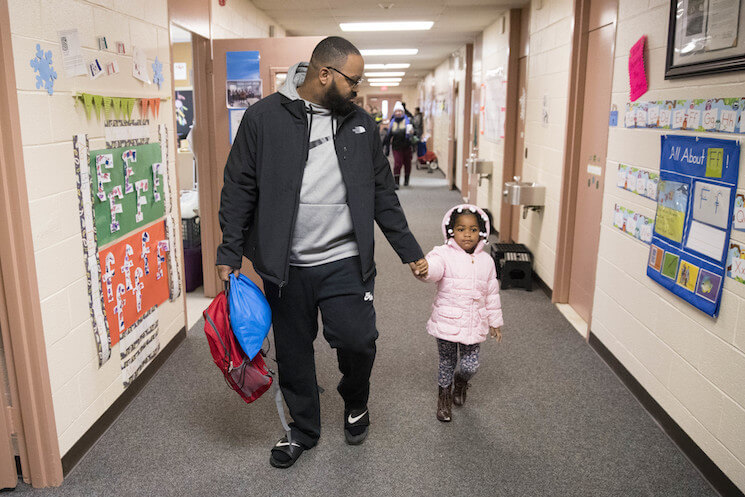Failing to invest in young kids is damaging the U.S. economy

Over the past 200 years, the federal government and individual states developed a slate of programs to improve the education and care for children. These investments, most notably Kindergarten-through-12th grade education as well as pre- and after-school care, nutrition, and health aimed at helping children, were designed not only to boost individual welfare but also create a higher-skilled workforce and thus a stronger economy. But historically, our spending has focused on older children. And this continues to be true: A new report put out late last month by the White House Council of Economic Advisors finds that national spending levels are lowest for children under the age of five. This is a major problem considering that a growing body of research clearly shows that children’s future contributions to the U.S. economy are largely shaped by their early environments.
Today, federal, state, and local governments combined spend a average of $14,000 annually per child on education, care, nutrition, and health, among other things. But that average masks the upward trajectory of spending as children get older. Government spending is about $16,600 annually for children ages 6 to 11 (and slightly less for kids ages 12 to 18), but only $10,220 for 3- to 5-year-olds, and a meager $8820 for 0- to 2-year-olds. (See Figure 1.)
Figure 1

The lack of focus on early childhood education and care is due in part to an outdated system built on the assumption that mothers still stay home with a young child while fathers go to work—even though this post-WWII ideal was never the reality for many women, especially women of color. What’s more, other countries among the nation’s developed and rapidly developing peers have caught up. The United States today spends less than almost every other of these nations on early childhood education and care. In 2012, the United States ranked 33rd out of 36 nations in terms of investment in early childhood education relative to their overall income, according to the Organization for Economic Cooperation and Development.
Unlike the United States, these other OECD countries are reaping the benefits shown by the large body of research showing the benefits of high-quality early childhood care and education programs. Studies show these programs are one of the best ways to reduce economic inequality and improve individual outcomes later in life. That’s because the brain is more “flexible” and responds to its environment more than that of older kids. When investment in younger children is implemented on a national scale, research shows that helps create a more productive workforce and provides a boost to the overall economy.
The lack of investment in young kids is compounded by the fact that it occurs at a time when most families lack the means to invest as heavily as they should in their young children’s education. Compared to parents of older children and teenagers, those who have young children in the United States tend to have lower-than-average salaries, savings levels, and less access to credit compared to European countries, where incomes actually go up at this period in families’ lives. On top of that, the financial burden of childcare and early-education programs in the United States is well documented, largely due to the need of younger kids for more attention. That means public funds in the United States that are available may not go as far in terms of hours in a care or a good educational setting.
The report by the Council of Economic Advisers finds that 47 percent of children under the age of five are in some kind of publicly financed program (compared to 89 percent of 12-year-old children), yet these programs only amount to about five hours a week, which means that working parents have to make other arrangements for the rest of the time. The report focuses on the longer-term economic effects of increasing investment in young children, but there also would be more immediate benefits. Investing more in early childhood programs could free up time for parents to work, increasing household income and also spurring demand.
Because of the short- and long-run effects of investing in young kids, there is a very good argument that early childcare and early education programs should be included in our definition of infrastructure. Just as investing in the bridges, roads, and ports that make up our physical infrastructure produces an economic return, so too does investing in a greater “care infrastructure,” as this report highlights. As the debate over infrastructure comes before Congress as a new presidential administration comes to power, policymakers should keep this research in mind as they think about ways to best strengthen and grow the U.S. economy over the next few years and over the long term.
